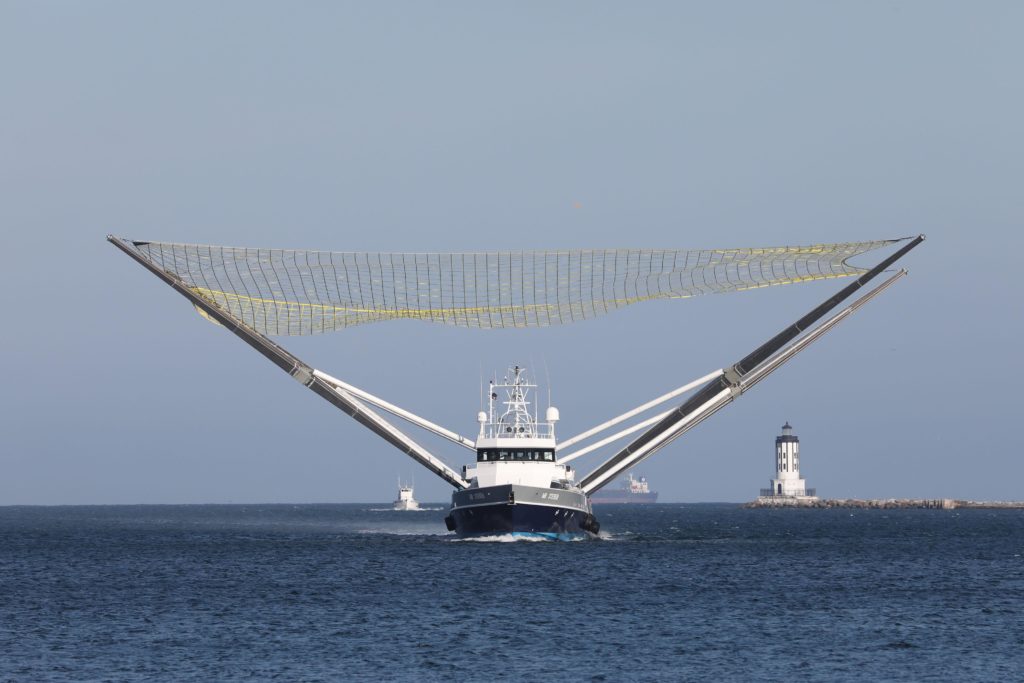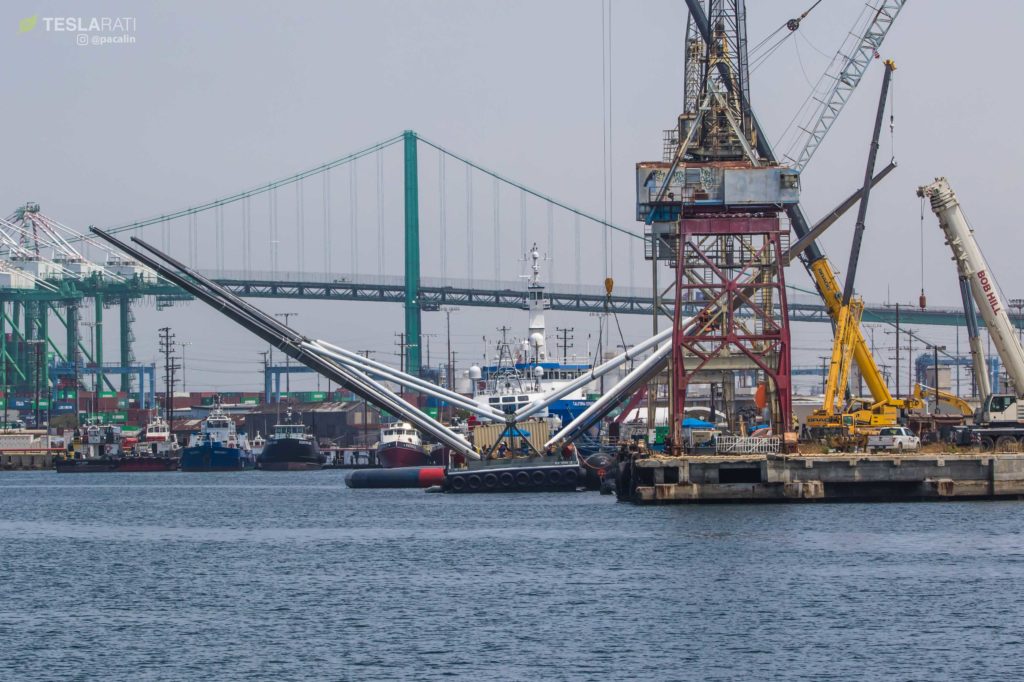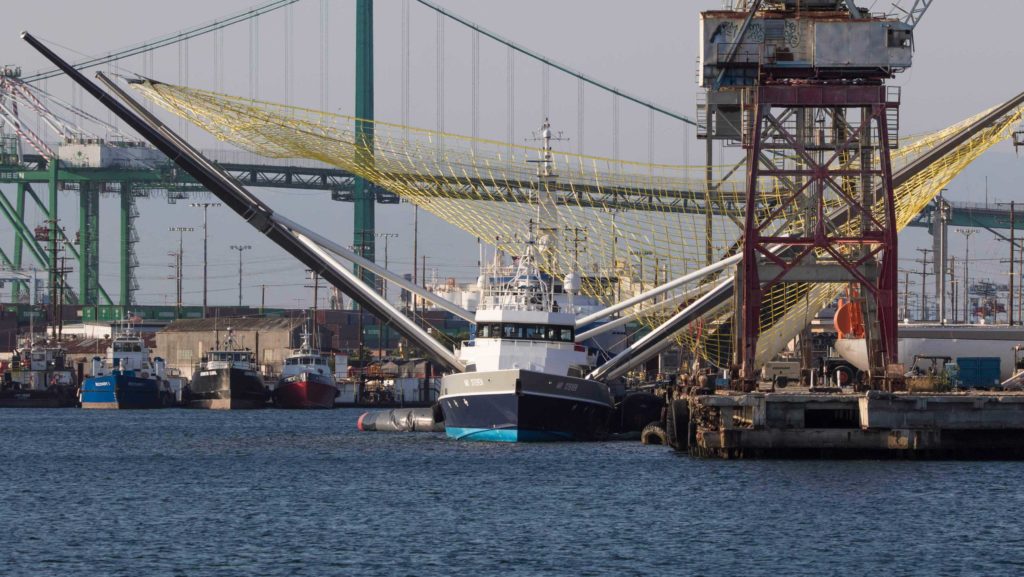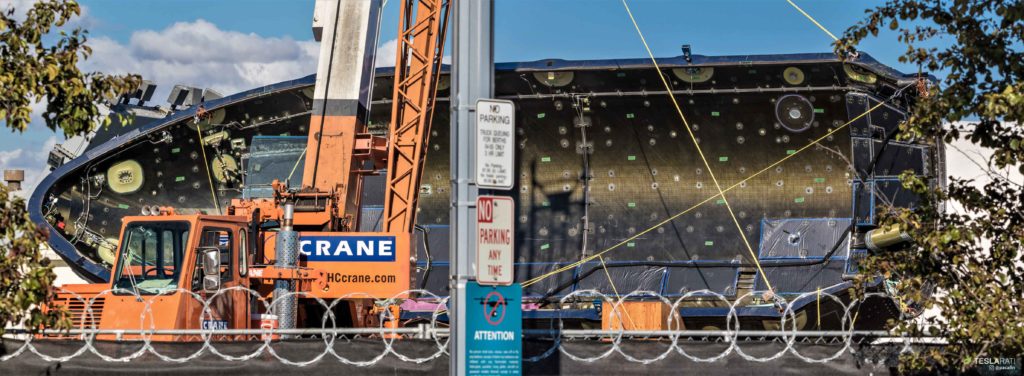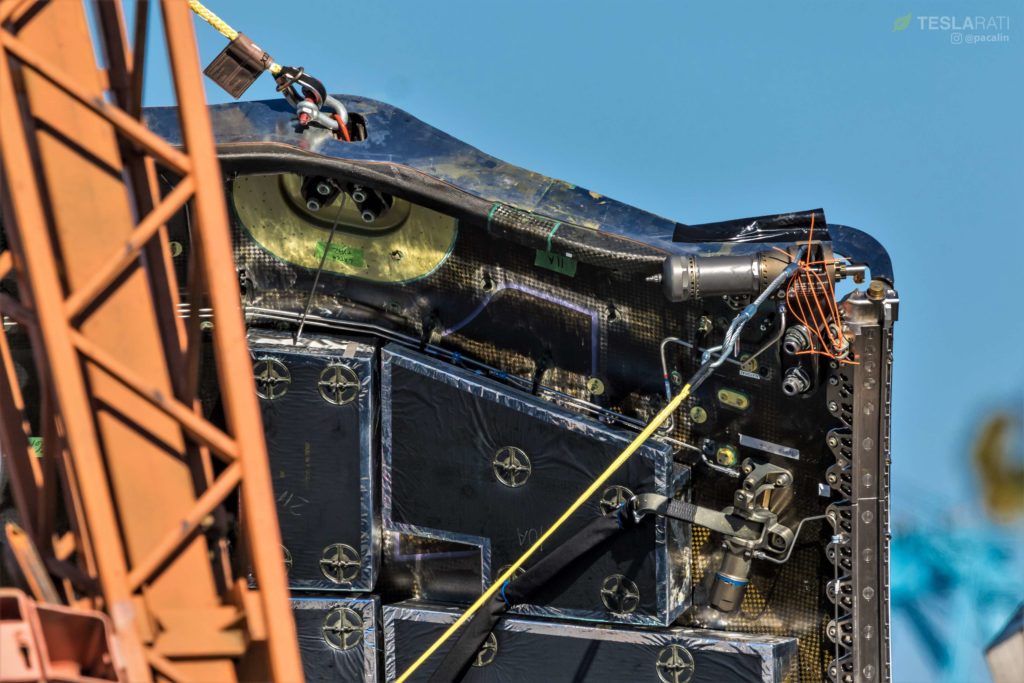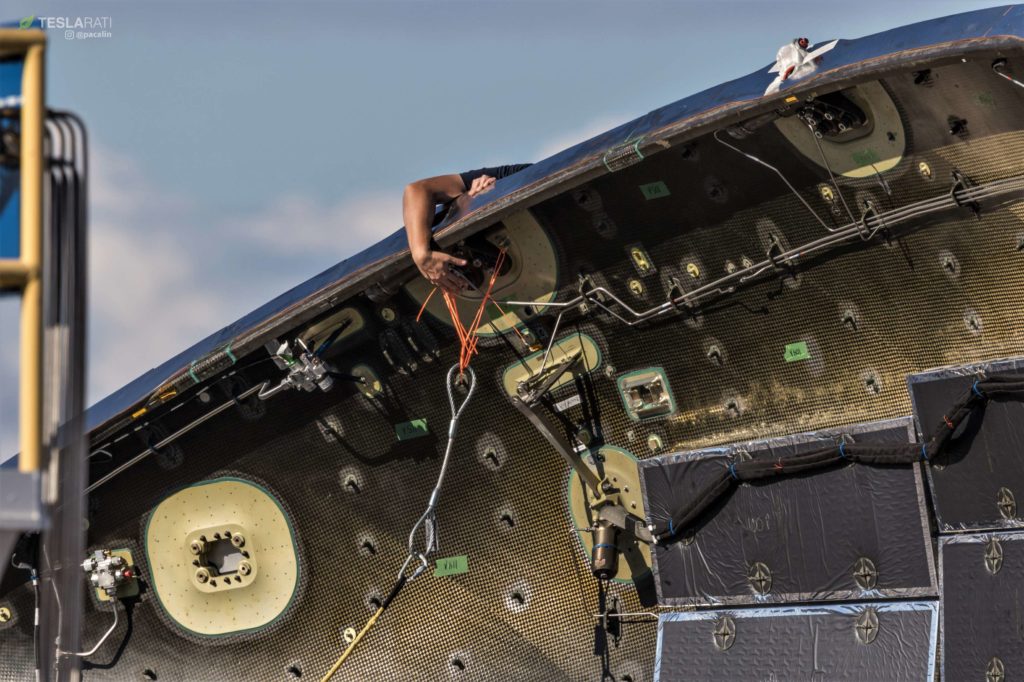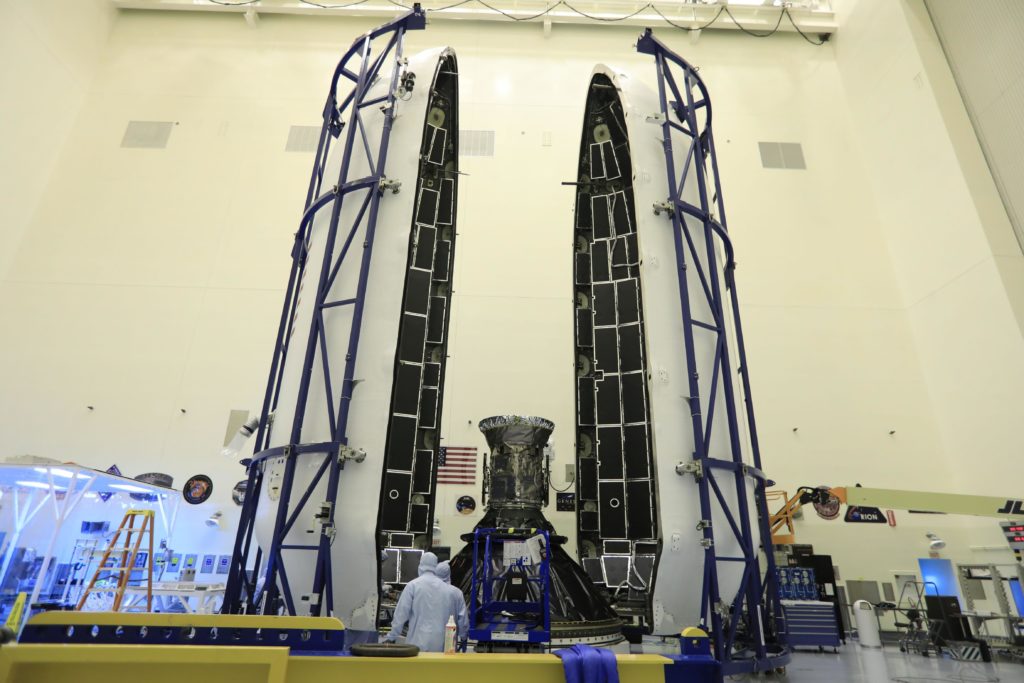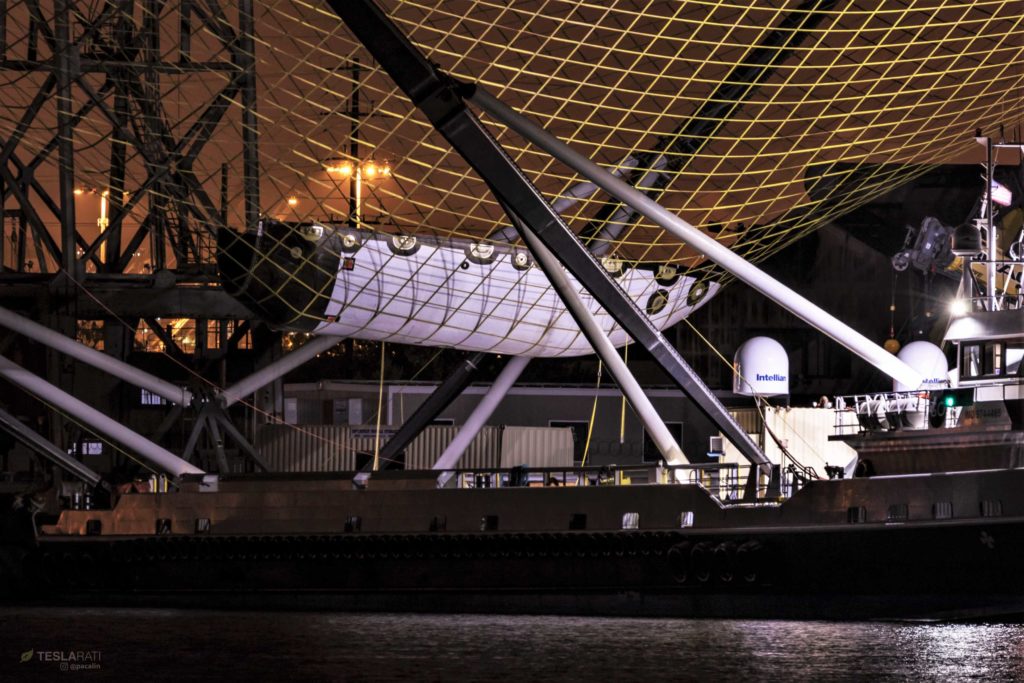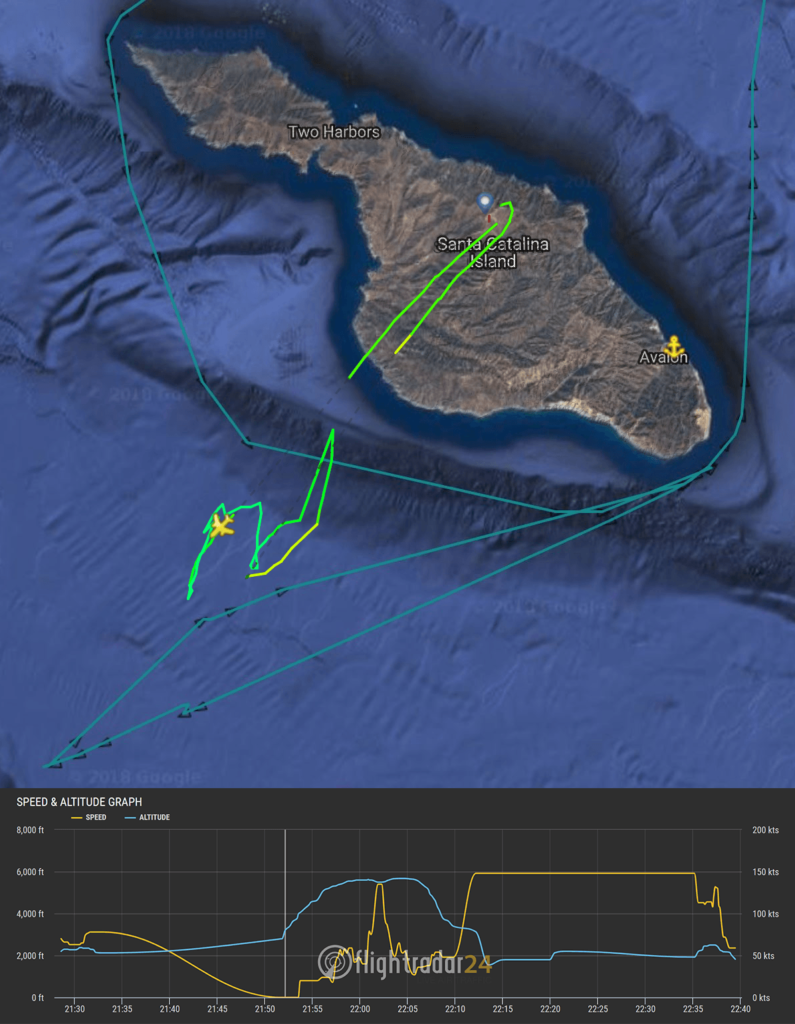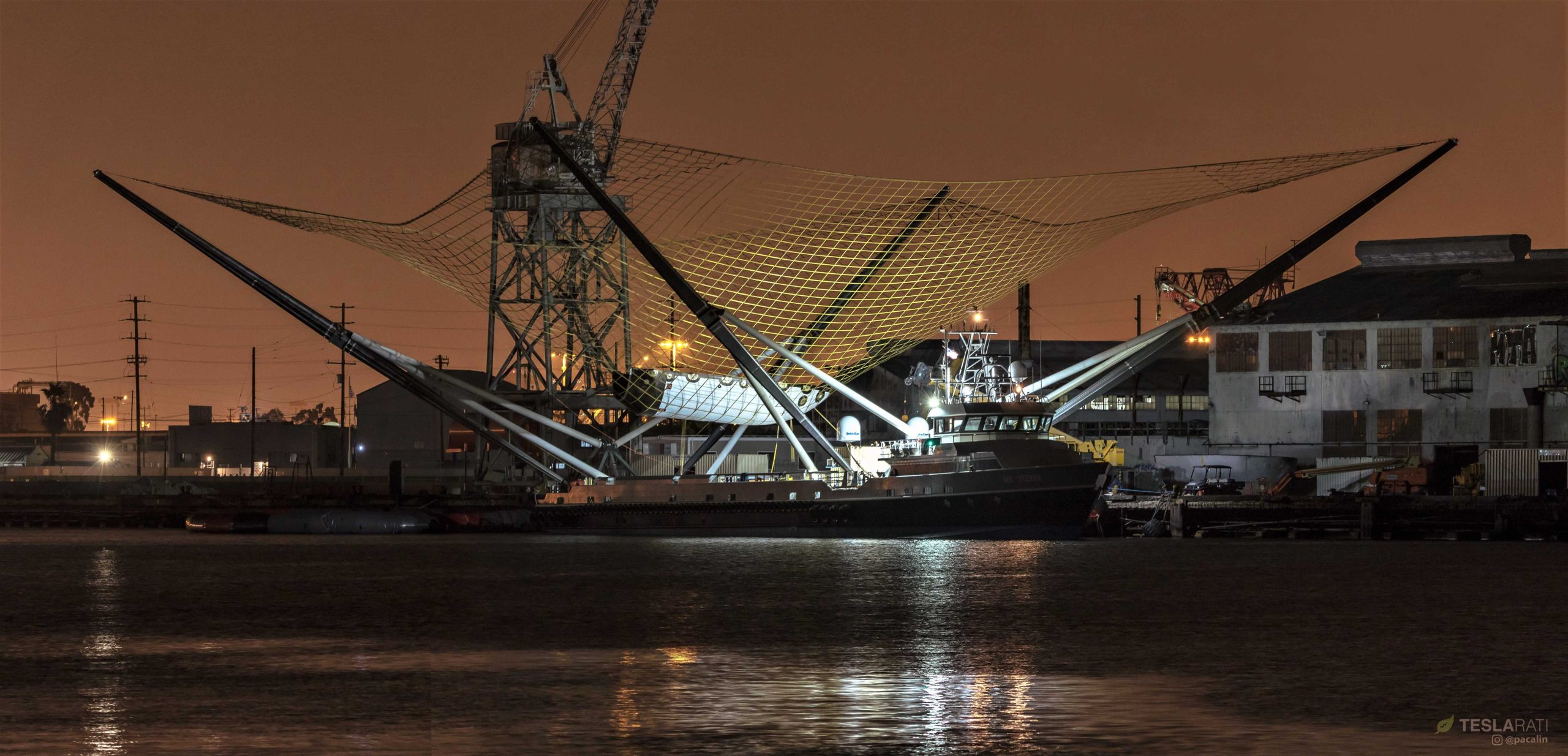
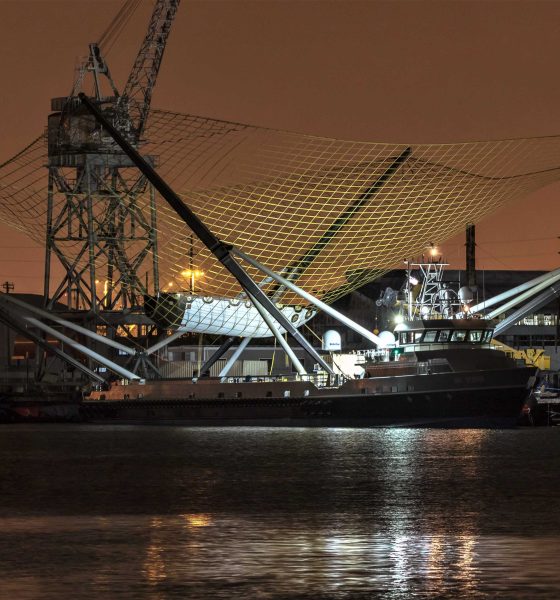
News
SpaceX’s Mr. Steven returns with Falcon fairing half in net after drop test practice
Captured in a series of photos taken by Teslarati photographers Pauline Acalin and Tom Cross over several days, SpaceX Falcon fairing recovery vessel Mr. Steven and recovery technicians and engineers have been preparing and practicing for a campaign of controlled fairing drop tests.
By using a helicopter to lift and drop a fairing into Mr. Steven’s net, SpaceX will be able to gather an unprecedented amount of data and control far more variables that might impact the success of recoveries. If the fairing is not destroyed in the process, this test series could be as long-lived as SpaceX’s Grasshopper program, used to work the largest up-front kinks out of Falcon 9 booster recovery.
Mr Steven looks ready. Should be leaving port at some point today ahead of SAOCOM-1A launch scheduled for Sunday, Oct 7, 7:21pm PT #mrsteven #SpaceX pic.twitter.com/Hk7HLmMDra
— Pauline Acalin (@w00ki33) October 6, 2018
Although SpaceX technicians managed to reassemble and install Mr. Steven’s net and arm fairing recovery mechanisms in just a handful of days, finishing less than 48 hours before the West Coast launch of SAOCOM 1A, the ship remained in port for the mission, passing up its fifth opportunity to attempt recovery of one of Falcon 9’s two fairings halves. Why exactly Mr. Steven never left port is unclear and unconfirmed, although SpaceX did mention that recovery would not be attempted this time around during its official launch webcast.
The most likely explanation is mundane – sea states with average swells as large as 4m (13ft) were forecasted (and later recorded) at and around the optimal fairing recovery zone. As a Fast Supply Vessel (FSV) explicitly designed to rapidly and reliably resupply oil rigs and other maritime work areas almost regardless of weather conditions, 4m waves would normally be a tiny pittance for ships as large and heavy as Mr. Steven and would be a nonsensical reason to halt deep-sea operations.
- Thanks to their relatively high angle of attack, Mr. Steven’s newest arms should not seriously impact his stability, but there is a chance that they limit his operational envelope in high sea-states. (Chuck Bennett)
- Mr. Steven seen listing roughly 5 degrees to port during arm installation, July 10th. (Pauline Acalin)
- A few-degree list seen during fairing recovery practice, August 13th. (Pauline Acalin)
On the other hand, Mr. Steven is without a doubt the most unusual FSV in existence thanks to his massive arms and net, stretching at least 60m by 60m. Based on photos of the arm installation process, significant lists of 5+ degrees are not uncommon when arms are unbalanced during normal staggered (one-at-a-time) installations, and SpaceX quite clearly installs the first two arms on opposite sides and orientations in order to minimize installation-related listing. This indicates that his newest arms have significant mass and thus leverage over the boat’s roll characteristics, perhaps explaining why Mr. Steven has performed anywhere from 5-10 high-speed trials at sea both with and without arms installed.
Most recently, however, Mr. Steven spent a solid six weeks armless at Berth 240 while some sort of maintenance, analysis, or upgrade was undertaken with those four arms and their eight shock-absorbing booms. It’s hard to know for sure, but there are no obvious visual changes between the arms installed in July and August and those now present on his deck, and the net also looks almost identical.
Fairing drop tests?
What’s less familiar these days is an oddly arranged Falcon 9 payload fairing half that has been floating around SpaceX’s Port of Los Angeles berths for the last two or so weeks. Up until October 4th, the purpose of that single half was almost entirely unclear. On October 4th, Teslarati’s entire space team (Tom, Pauline, and I) coincidentally arrived at the same time as 5-10 SpaceX technicians were working on the fairing, attaching a series of guylines and harnesses and inspecting a number of actuating mechanisms on the half.
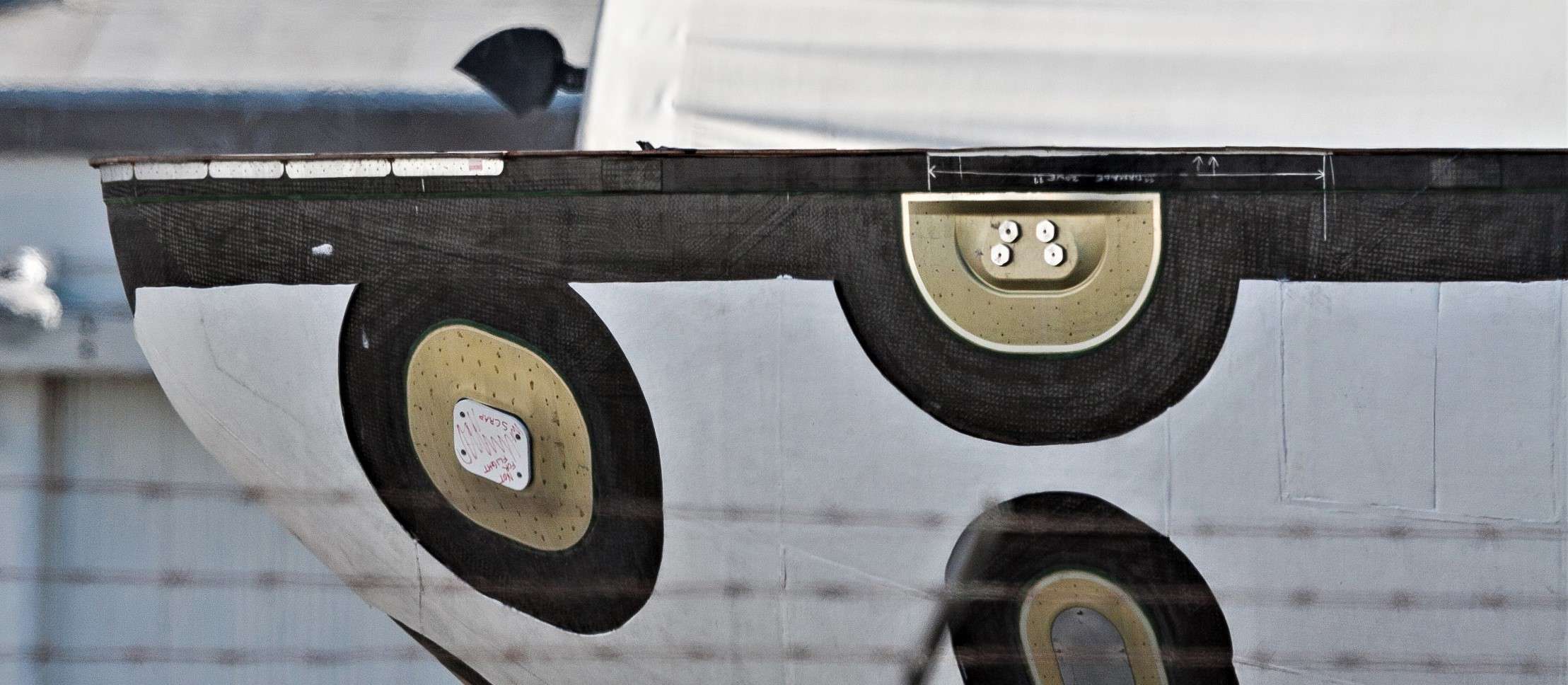
Just minutes after we arrived, a worker called out a short countdown and a wholly unexpected crashing noise sounded, followed immediately by several loud clangs as the harness connection mechanisms swung back and connected with metallic parts of the fairing. After the adrenaline wore off, the initial crashing noise was almost certainly the sound of the same mechanical jettison mechanism used to separate fairing halves ~3 minutes after the rocket lifts off.
Once photos of the event could be examined more carefully, that was exactly what we found – the six harness connections were attached to the fairing by way of the same mechanical interface that allows two halves to safely attach to each other. What we had witnessed was a harness separation test, using pressurized gas stored in COPVs (the gold striped cylinders) to rapidly actuate a latch, allowing the metal harness connectors to fall away. This is further evidenced by the presence of neon orange zip-ties connecting the ends of those harnesses to any sturdy fairing structure near the connection port, an easy and (presumably) affordable way to prevent those heavy connectors from swinging down and damaging sensitive piping and components.
- An overview of the weird fairing test article just before the harnesses were jettisoned. (Pauline Acalin)
- Note the taut, yellow ropes connected to the fairing at its original serparation connector ports. (Pauline Acalin)
- Zip-ties prevented the harness connectors from smashing (too hard) into the fairing’s innards. (Pauline Acalin)
- A Falcon 9 fairing during encapsulation, when a launch payload is sealed inside the fairing’s two halves. This small satellite is NASA’s TESS, launched in April 2018. (NASA)
According to someone familiar with these activities, the purpose of that testing is to prepare for true fairing drop tests from a helicopter. The jettisonable harness would be a necessity for easy drop testing, allowing the helicopter to carry a basic cargo hook and line while technicians inside communicate with the fairing to engage its built-in separation mechanism, all while ensuring that it immediately begins a stable glide or free-fall after dropping.
Observed on October 4th, it was at least moderately disappointing to see Mr. Steven remain in port during the spectacular Falcon 9 launch of SAOCOM 1A, October 7th. Reasons aside, roughly 12 hours after launch, Mr. Steven left on a 10+ hour cruise ~100 miles off the coast, where he repeatedly met up with tugboat Tommy and circled Santa Catalina Island once before heading back to port. Just 24 hours before launch (Oct. 6), the test fairing seen above was placed in Mr. Steven’s net for communications and harness testing – 24 hours after launch, Mr. Steven returned to Port of San Pedro after his 10-hour cruise with the same fairing half resting in his net.
- Mr. Steven returned to Port of San Pedro around 7pm on October 8th after a day spent at sea, apparently with a Falcon fairing half in tow. This is the second known time that a fairing has been in Mr. Steven’s net. (Pauline Acalin)
- An overlay of the paths of travel of a test-related helicopter and Mr. Steven, both on Oct. 8. The yellow plane is the heli at the beginning of a hover, while the gap between blue triangles in the lower left is where Mr. Steven was during that hover. (MarineTraffic + Flightradar24)
How and why it got there is unknown, as is the purpose of half a day spent boating around with the half in his net. However, a helicopter known to be involved in fairing drop tests was seen hovering and flying around Mr. Steven at the same time. Perhaps the two were practicing for real drop attempts, or perhaps the helicopter actually dropped a Falcon fairing (from > 2000 feet) and Mr. Steven successful caught it.
What is clear is that SpaceX is just getting started with efforts to perfect fairing recovery and eventually make the practice as (relatively) routine as Falcon 9 booster recovery and reuse is today. The latter was hardwon and the former will clearly be no easier.
For prompt updates, on-the-ground perspectives, and unique glimpses of SpaceX’s rocket recovery fleet check out our brand new LaunchPad and LandingZone newsletters!

News
Tesla sees sharp November rebound in China as Model Y demand surges
New data from the China Passenger Car Association (CPCA) shows a 9.95% year-on-year increase and a 40.98% jump month-over-month.
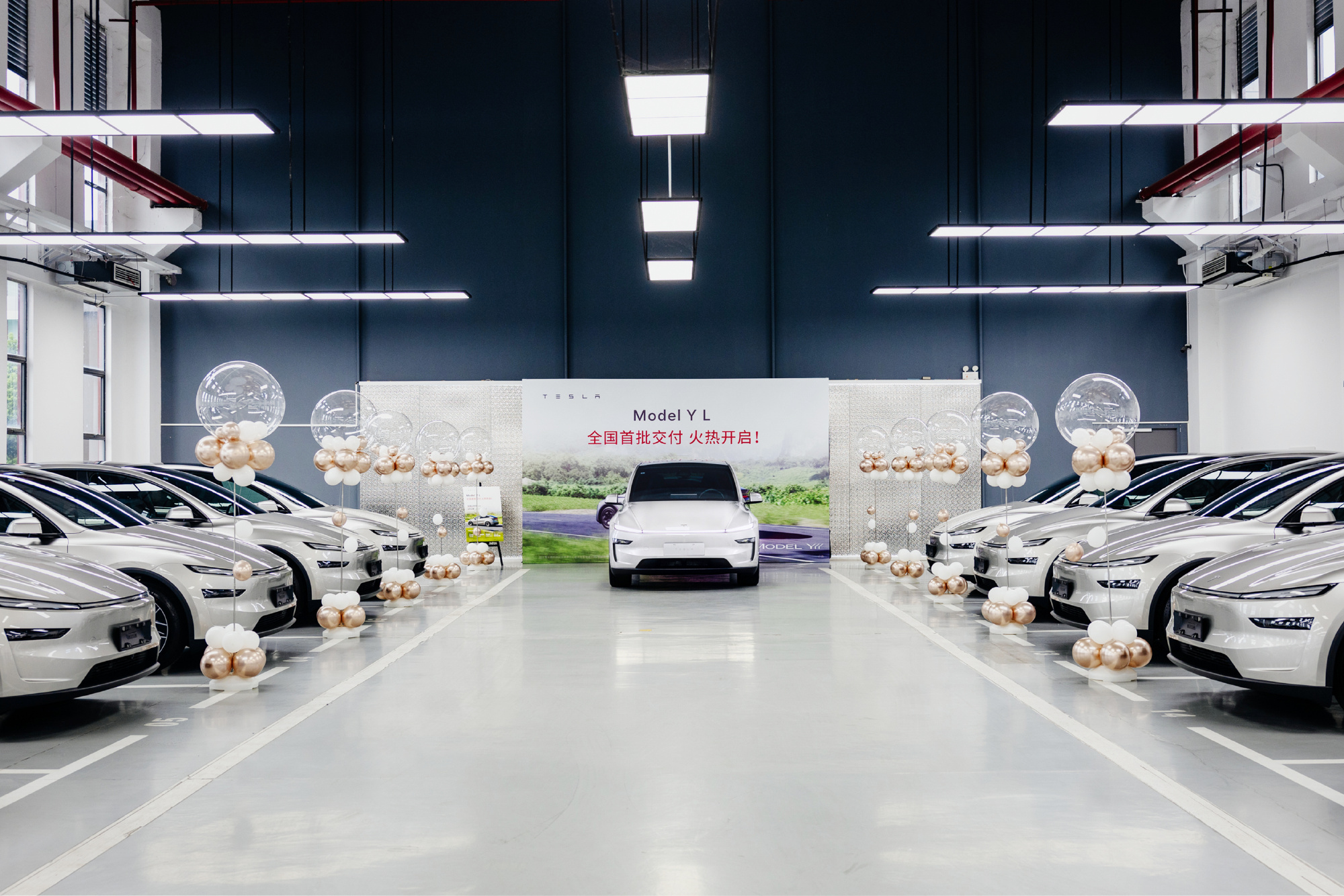
Tesla’s sales momentum in China strengthened in November, with wholesale volumes rising to 86,700 units, reversing a slowdown seen in October.
New data from the China Passenger Car Association (CPCA) shows a 9.95% year-on-year increase and a 40.98% jump month-over-month. This was partly driven by tightened delivery windows, targeted marketing, and buyers moving to secure vehicles before changes to national purchase tax incentives take effect.
Tesla’s November rebound coincided with a noticeable spike in Model Y interest across China. Delivery wait times extended multiple times over the month, jumping from an initial 2–5 weeks to estimated handovers in January and February 2026 for most five-seat variants. Only the six-seat Model Y L kept its 4–8 week estimated delivery timeframe.
The company amplified these delivery updates across its Chinese social media channels, urging buyers to lock in orders early to secure 2025 delivery slots and preserve eligibility for current purchase tax incentives, as noted in a CNEV Post report. Tesla also highlighted that new inventory-built Model Y units were available for customers seeking guaranteed handovers before December 31.
This combination of urgency marketing and genuine supply-demand pressure seemed to have helped boost November’s volumes, stabilizing what had been a year marked by several months of year-over-year declines.
For the January–November period, Tesla China recorded 754,561 wholesale units, an 8.30% decline compared to the same period last year. The company’s Shanghai Gigafactory continues to operate as both a domestic production base and a major global export hub, building the Model 3 and Model Y for markets across Asia, Europe, and the Middle East, among other territories.
Investor's Corner
Tesla bear gets blunt with beliefs over company valuation
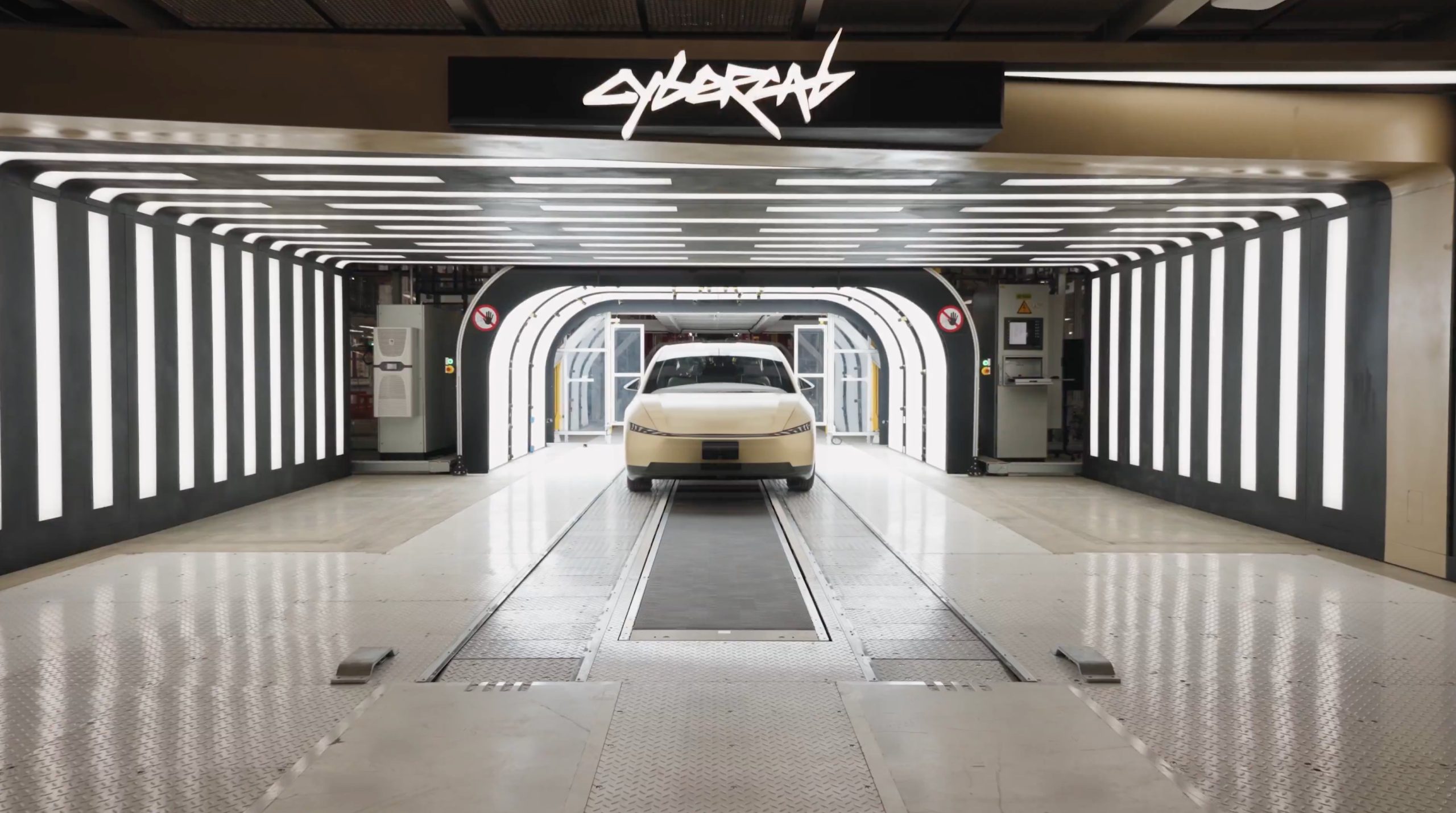
Tesla bear Michael Burry got blunt with his beliefs over the company’s valuation, which he called “ridiculously overvalued” in a newsletter to subscribers this past weekend.
“Tesla’s market capitalization is ridiculously overvalued today and has been for a good long time,” Burry, who was the inspiration for the movie The Big Short, and was portrayed by Christian Bale.
Burry went on to say, “As an aside, the Elon cult was all-in on electric cars until competition showed up, then all-in on autonomous driving until competition showed up, and now is all-in on robots — until competition shows up.”
Tesla bear Michael Burry ditches bet against $TSLA, says ‘media inflated’ the situation
For a long time, Burry has been skeptical of Tesla, its stock, and its CEO, Elon Musk, even placing a $530 million bet against shares several years ago. Eventually, Burry’s short position extended to other supporters of the company, including ARK Invest.
Tesla has long drawn skepticism from investors and more traditional analysts, who believe its valuation is overblown. However, the company is not traded as a traditional stock, something that other Wall Street firms have recognized.
While many believe the company has some serious pull as an automaker, an identity that helped it reach the valuation it has, Tesla has more than transformed into a robotics, AI, and self-driving play, pulling itself into the realm of some of the most recognizable stocks in tech.
Burry’s Scion Asset Management has put its money where its mouth is against Tesla stock on several occasions, but the firm has not yielded positive results, as shares have increased in value since 2020 by over 115 percent. The firm closed in May.
In 2020, it launched its short position, but by October 2021, it had ditched that position.
Tesla has had a tumultuous year on Wall Street, dipping significantly to around the $220 mark at one point. However, it rebounded significantly in September, climbing back up to the $400 region, as it currently trades at around $430.
It closed at $430.14 on Monday.
News
Tesla is making a change to its exterior cameras with a potential upgrade
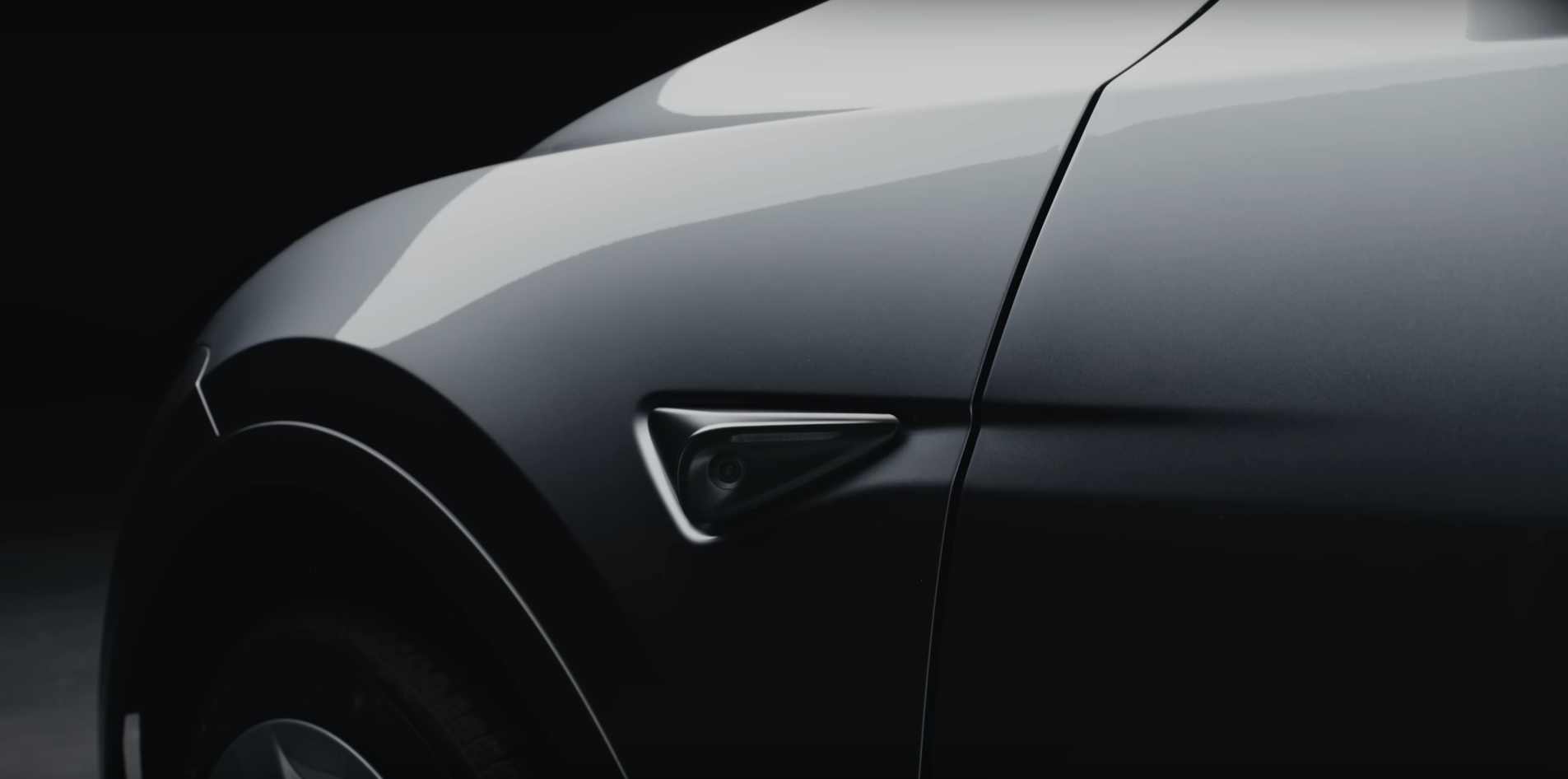
Tesla appears to be making a change to its exterior side repeater cameras, which are used for the company’s Full Self-Driving suite, and other features, like Sentry Mode.
The change appears to be a potential upgrade in preparation for the AI5 suite, which CEO Elon Musk said will be present on a handful of vehicles next year, but will not be widely implemented until 2027.
Currently, Tesla uses a Sony sensor lens with the model number IMX963, a 5-megapixel camera with better dynamic range and low-light performance over the past iteration in Hardware 3 vehicles. Cameras in HW3 cars were only 1.2 megapixels.
However, Tesla is looking to upgrade, it appears, as Tesla hacker greentheonly has spotted a new sensor model in its firmware code, with the model number IMX00N being explicitly mentioned:
Looks like Tesla is changing (upgrading?) cameras in (some?) new cars produced.
Where as HW4 to date used exterior cameras with IMX963, now they (might potentially) have something called IMX00N— green (@greentheonly) December 1, 2025
Sony has not announced any formal specifications for the IMX00N model, and although IMX963 has been used in AI4/HW4 vehicles, it only makes sense that Tesla would prepare to upgrade these external cameras once again in preparation for what it believes to be the second hardware iteration capable of fully autonomous self-driving.
Tesla has maintained that AI4/HW4 vehicles are capable of self-driving operation, but AI5 will likely help the company make significant strides, especially in terms of overall performance and data collection.
Tesla last updated its exterior cameras on its vehicles back in early 2023, as it transitioned to the 5-megapixel IMX963. It also added additional cameras to its vehicles in January with the new Model Y, which featured an additional lens on the front bumper to help with Full Self-Driving.
Tesla’s new self-driving computer (HW4): more cameras, radar, and more

